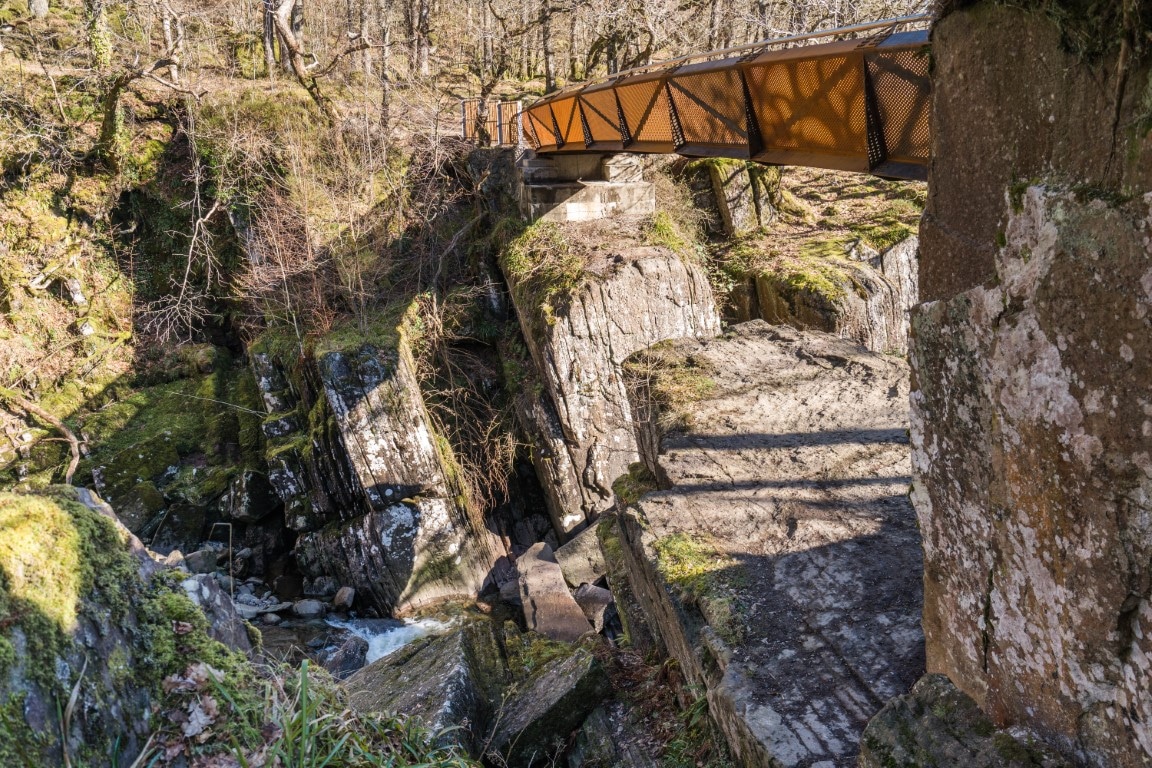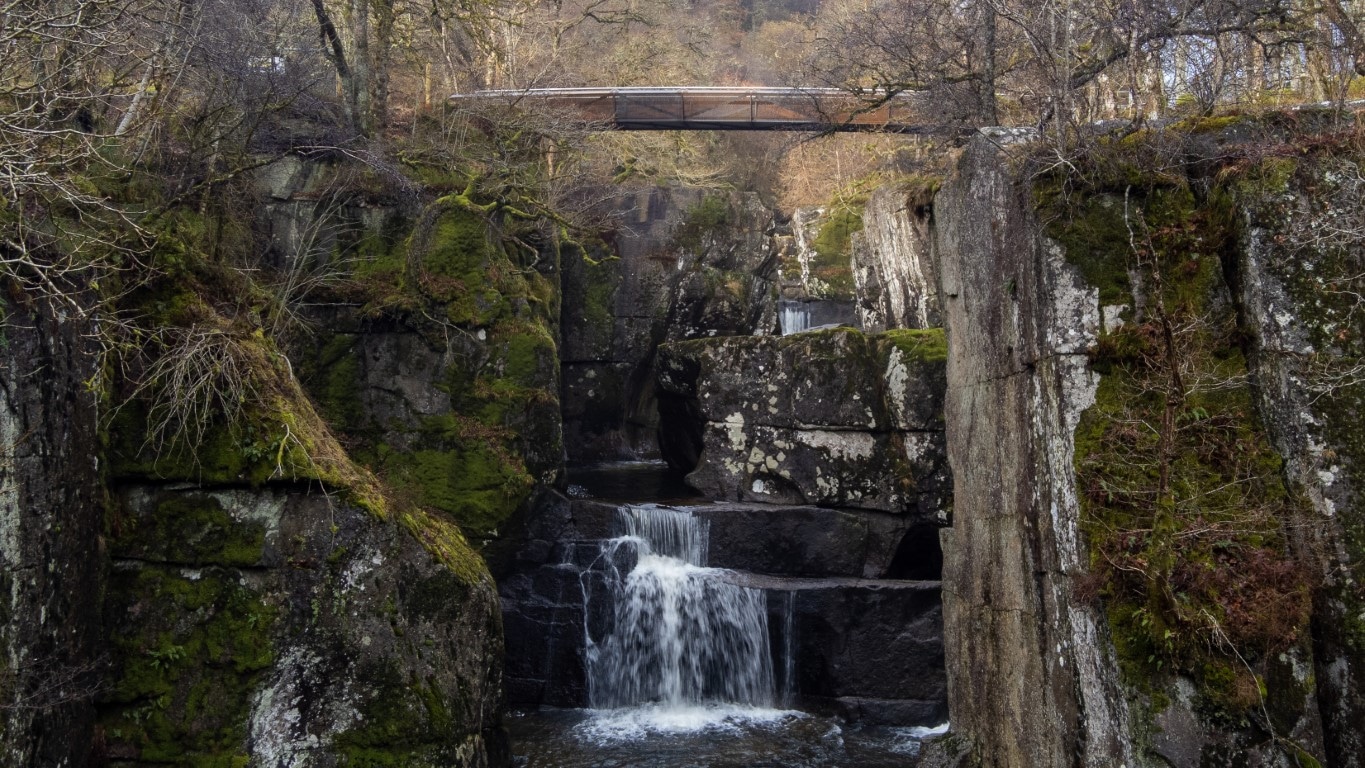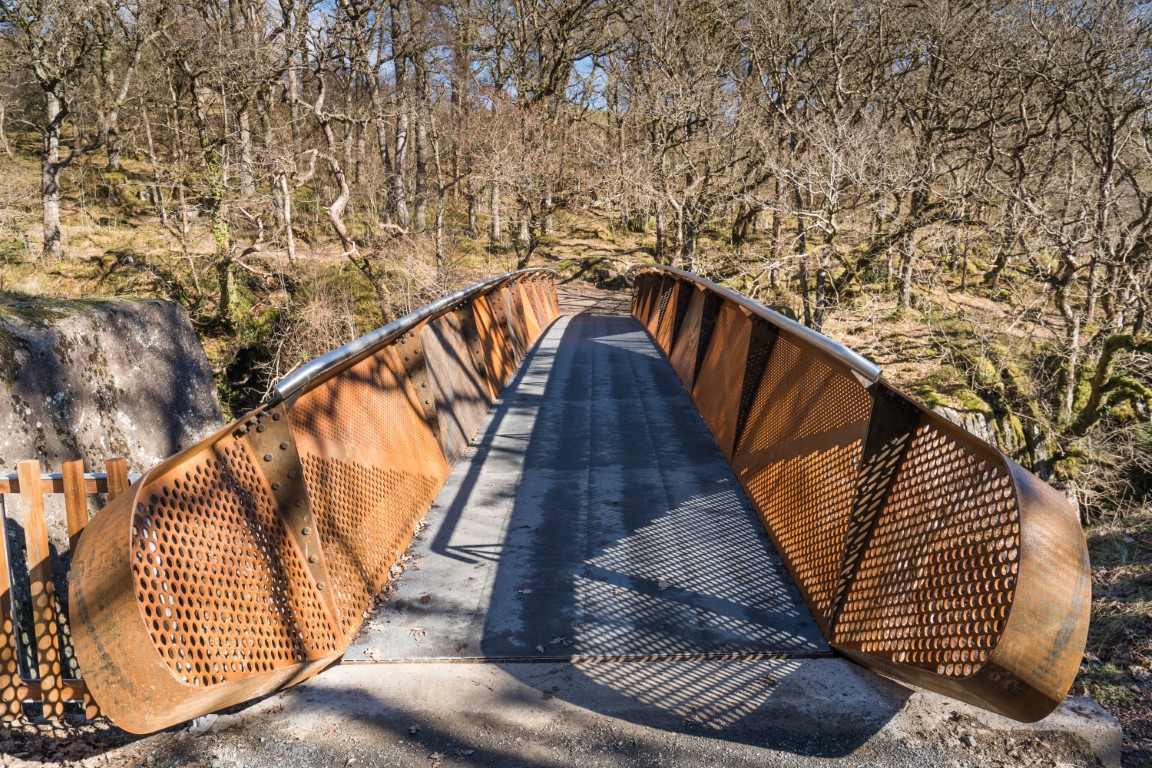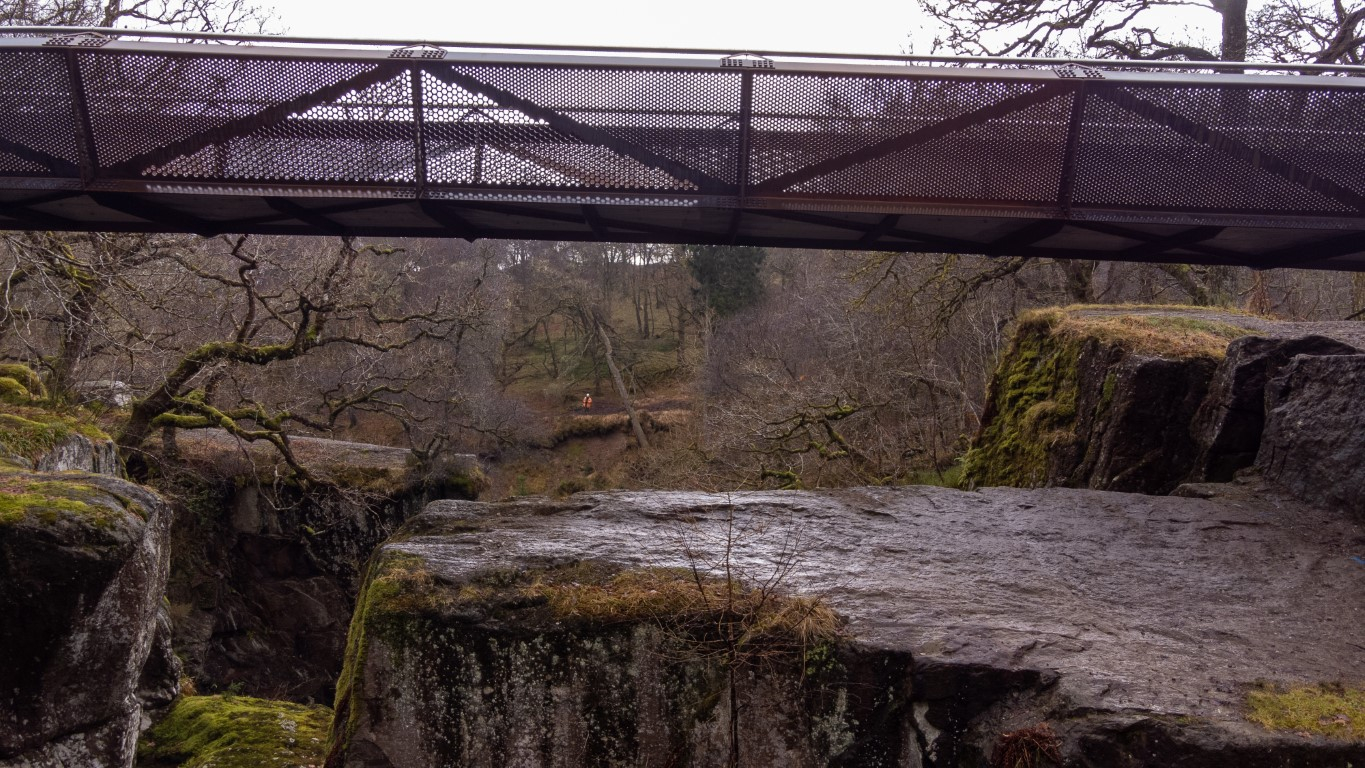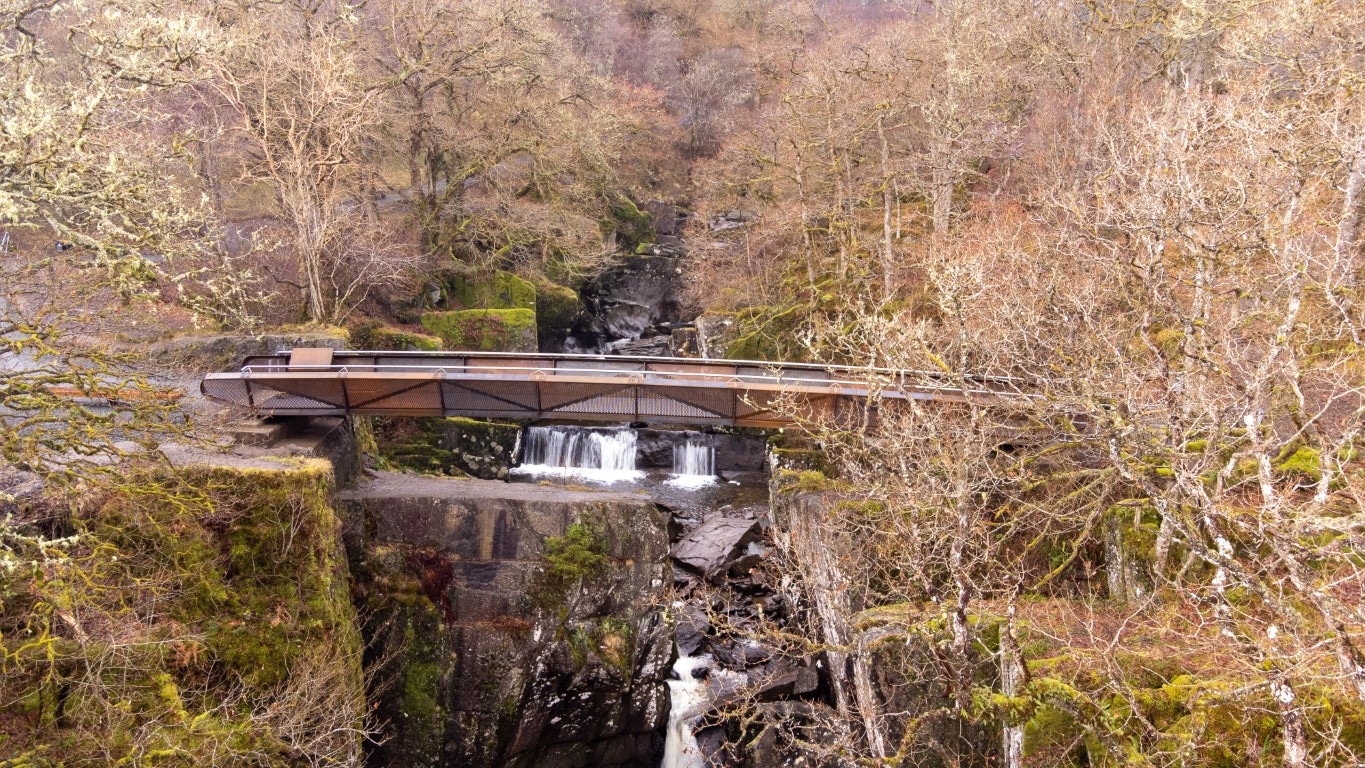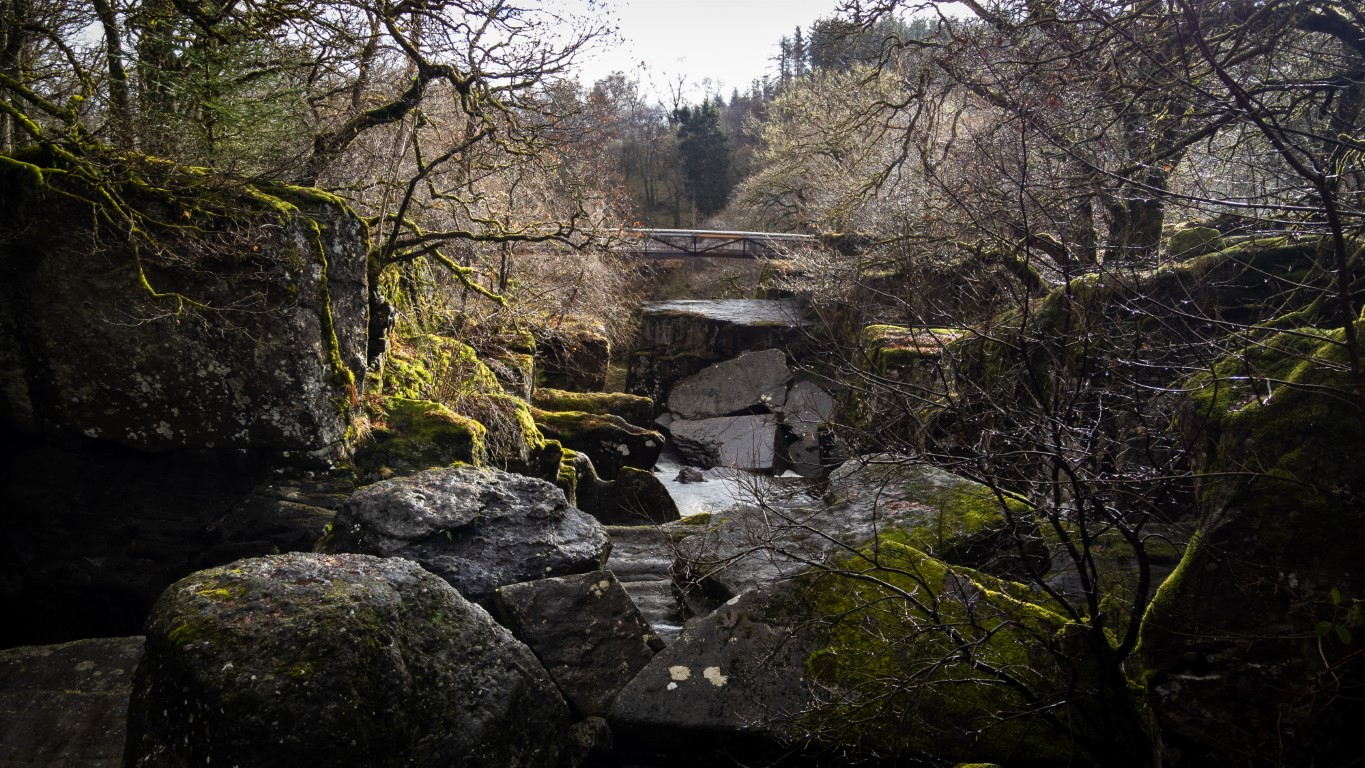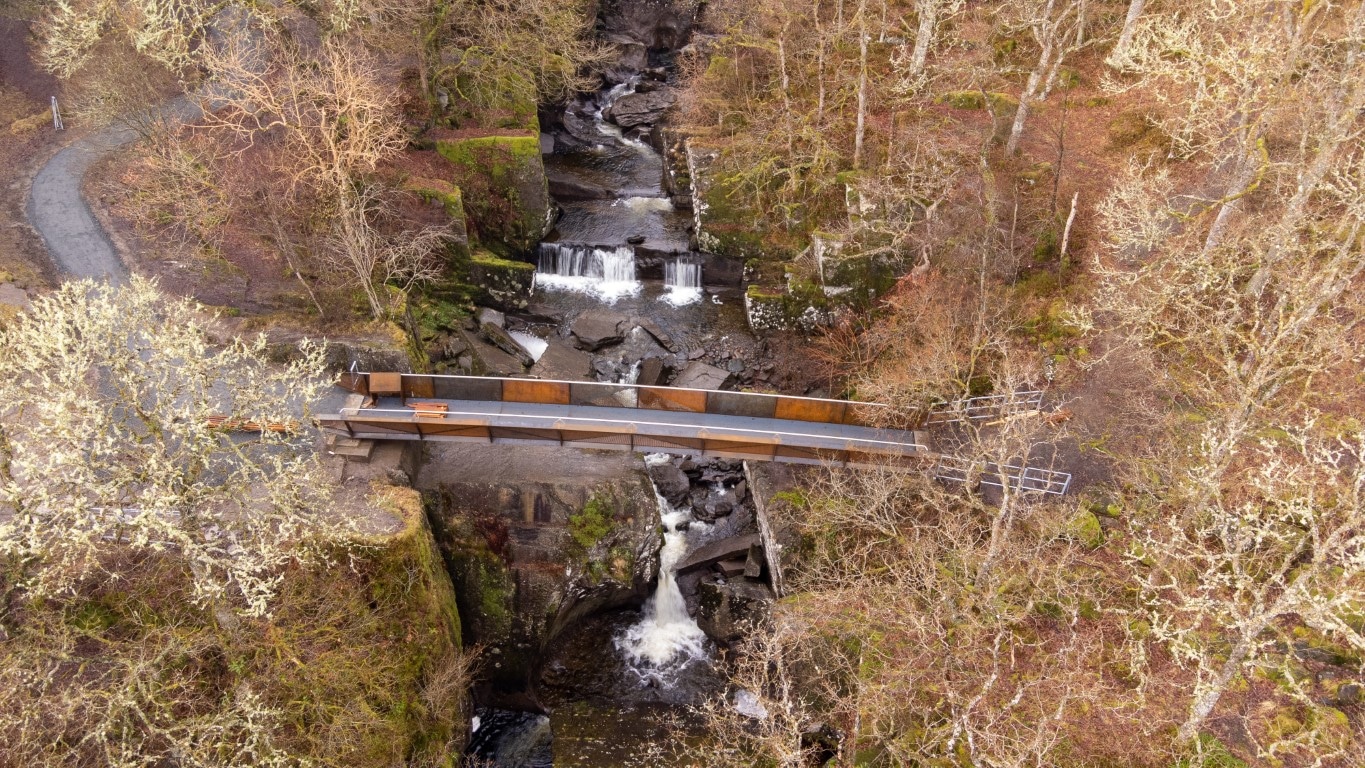
© 2020 Cake Industries. All rights reserved.
Bracklinn Falls Footbridge
Bracklinn Falls is a stepped waterfall in the Loch Lomond and Trossachs National Park, formed by the Keltie Water north-east of Callander. The site is a remote but popular visitor destination with paths following the river on both sides to form a 5km loop between upstream and downstream crossings. A bridge has existed here at least since the early 19th century and an 1834 sketch by JMW Turner clearly shows a structure across the falls. A later crossing built for Queen Victoria’s 1870 visit was destroyed by flooding in 2004, and a timber replacement was removed in 2021 due to deterioration, testifying to the harsh conditions in this rural location. In 2022 The National Park Authority commissioned a new pedestrian bridge to re-establish the circular trail, requiring a 120-year design life and a low-cost, low-maintenance construction. The picturesque site demanded a sensitive design response to context as well as a resilient technical solution.
The new 21.7m x 2m wide bridge is a rigorously coordinated horizontal form designed in respect of its dramatic natural setting. The design was informed by exceptionally constrained access for construction via a forestry track and a steep winding footpath that severely restricted plant and component sizes. Accordingly the bridge was designed as a modular construction, comprising 2.7m long elements delivered and erected with the aid of only a midi-excavator. The structure was built in sections on one side of the falls and pushed incrementally across the gap on temporary rails.
The design is a ‘walk-through’ structure constructed of perforated weathering steel, with longitudinal beams doubling as pedestrian parapets. A series of folded Z-profile panels along each edge are bolted together through intermittent U-frames to create a continuous spanning structure. The parapets lean out from the deck to provide a generous spatial environment for users. FRP decking and stainless-steel handrails complete a simple elemental composition.
The perforated material reduces weight and adds transparency, with larger openings in the centre of the structure where the forces are less creating a mid-span ‘window’. In views along the bridge the upstands appear reassuringly opaque but in lateral views the opacity dissolves to reveal the landscape and falls below. Seen from the surrounding landscape the bridge is extraordinarily transparent, seemingly composed only of the triangulated margins between perforated areas. The bridge hides in plain sight, demurring to its dramatic context but providing a confident architectural intervention in challenging circumstances.
Client: Loch Lommond and the Trossachs National Park Authority
Main contractor: Cake Industries
Structural engineering and design lead: Cake Engineering
Architecture: Beam Architects
Independent checking: Format Engineers
Installation: BigCat Contracts
Photographs and video: Timelapse Scotland and Paul Saunders

